With the impending departure of Starz programming including the 1980s and 1990s Perry Mason Telefilms, I’ve been watching all 26 of these last films with the aging Raymond Burr. My thoughts on the first 9 films (i.e. the Paul Drake, Jr. era) are here.
After the 1988 Movie, “The Lady in the Lake,” William Katt departed the cast and Paul Drake, Jr. was replaced by lawyer Ken Malansky, played by William Moses. The Ken Malansky era was the one I grew up watching, but Malansky wasn’t all these other films had to offer.
 Ken Malansky: The change from Drake to Malansky seemed to recapture some of the old Perry Mason Magic. The way that Perry Mason had worked in the 1950s was in establishing a family atmosphere on the team between Perry, Della, and Paul Drake. With Raymond Burr and Della Street much older, they needed a dutiful son-type rather than a brother-type as the original Paul Drake had been For me, Ken Malansky gelled better in that capacity. This, despite the fact that Katt was actually Barbara Hale’s real life son.
Ken Malansky: The change from Drake to Malansky seemed to recapture some of the old Perry Mason Magic. The way that Perry Mason had worked in the 1950s was in establishing a family atmosphere on the team between Perry, Della, and Paul Drake. With Raymond Burr and Della Street much older, they needed a dutiful son-type rather than a brother-type as the original Paul Drake had been For me, Ken Malansky gelled better in that capacity. This, despite the fact that Katt was actually Barbara Hale’s real life son.
Unlike Drake, Malansky wasn’t a detective. He was a fully licensed member of the bar (after his first appearance when he was a law student accused of murder) who did the work of a private investigator. While he struggled with cases, and finding his man he was far more competent than Drake, Jr.
It did take them a while to get the Malansky character just right. The first three movies with Malansky in 1989 featured Alexandra Paul as his eccentric on-again/off-again fiancee’. They took the quirky character and tried to make her into a detective in training. It didn’t work and by the next season she’d disappeared into the memory hole that had swallowed TV characters such as Chuck Cunningham. From then on, Malansky was paired with a different (usually female) sidekick each movie, often against his will.
Over the course of the seventeen films, Moses grew increasingly comfortable in the role and his role in Perry’s office grew. In early episodes, Perry declined to have the green young attorney as co-counsel, but later he was introduced as Perry’s associate and in one of the final movies as his partner.
Overall, the family dynamic had gelled very well by the time the last few Mason films would air.
Lt. Brock: The latter films featured a lot more of James McEachin as Lieutenant Brock. McEachin had appeared in the second Perry Mason film as Sergeant Brock in The Case of the Notorious Nun. McEachin returned in another role, In the Case of the Scandalous Scoundrel in 1987, before finding his way back for 13 more episodes as Sergeant and later Lieutenant Brock including 12 of the Malansky era Masons. McEachin had a folksy and convicing manner that almost sold you on whatever slim circumstantial case he’d gotten against Perry’s clients. As I watched a lot of these movies in a row, one thing that did begin unbelievable is his extreme confidence that there was just no way, Perry Mason was going to get his client out of this one. “Unlike the last eleven times I said this, Mr. Mason, there’s no way your client will ever be acquitted.”
Yeah, right. See you in court.
The Prosecutors: After the departure of David Ogden Stiers in 1988, the prosecution table became a smorgasboard of forgettable performances. The prosecution was so inconsequential that in one episode, the writers didn’t bother to name her, having the judge address her only as, “Madam prosecutor.”
One exception to this was, “Perry Mason and the Case of the Fatal Fashion” which featured Scott Baio as the opposing counsel. This was actually Baio’s first role since the end of Charles in Charge and he acquitted himself well as a hotshot young attorney who admires Perry Mason and dreams of besting the great man in court. While he doesn’t end up doing it, he probably came closer than anyone else, and made a nice bright spot in these bleak catalog of unworthy prosecutors.
A Little Padding: Some of the Perry Mason films came off as padded to fit timeslots. Perhaps, the worst example of this is the obligatory scene where the prosecutor asks the arresting officer about finding the murder weapon. When Mason cross-examines, this makes sense. When he says, “No questions,” as he does a few times, it seems like a waste of the audience’s time as it reveals no new information.
Exit Raymond Burr: Of course, these are minor points. Whatever flaws or logical inconsistencies can be found in Perry Mason’s TV movies, over the course of 26 films, the highlight is still the opportunity to see Raymond Burr in his most memorable role just one more time. While some other parts of the show disappointed in terms of acting, writing, or pacing, Burr remained the consumate professional and delivered solid performances to the end, including his last performance before his 1993 deat in, “Perry Mason and the Case of the Killer Kiss.” Lawyers had long been a joke and despised, but Burr succeeded in creating an attorney who was beloved for his pursit of justice.
Burr’s death left the network on the hook to produce 4 new Perry Mason films, but without the definitive Perry Mason. Rather than trying to cast another actor as Mason, the Network opted to bring in Paul Sorvino and then Hal Holbrooke as friends of Perry filling in. I may watch those films before they disappear from Netflix. I barely remember them from when they aired. The main thing I remember about Sorvino and Holbrooke is that they were no Raymond Burr.
Then again who was?
If you enjoyed this post, you can have new posts about Detective stories and the golden age of radio and television delivered automatically to your Kindle.
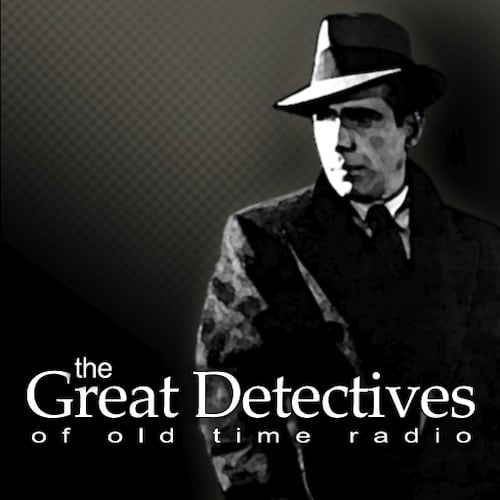
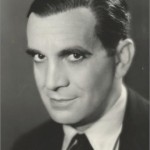 The Shell Chateau was first hosted by Al Jolson in 1935 he returned later on in 1936. Today, Jolson today is best remembered. for starring in the first feature length-talkie, The Jazz Singer. Jolson was in the midst of a four decade run as America’s best-known and most popular entertainer which no doubt buoyed Shell’s program In the programs where Jolson hosts, listeners were treated to several distinctive tunes from Jolson’s golden voice. Jolson was, in my opinion, not nearly as good a comedian, his jokes often seeming to be first grade vaudeville corn.
The Shell Chateau was first hosted by Al Jolson in 1935 he returned later on in 1936. Today, Jolson today is best remembered. for starring in the first feature length-talkie, The Jazz Singer. Jolson was in the midst of a four decade run as America’s best-known and most popular entertainer which no doubt buoyed Shell’s program In the programs where Jolson hosts, listeners were treated to several distinctive tunes from Jolson’s golden voice. Jolson was, in my opinion, not nearly as good a comedian, his jokes often seeming to be first grade vaudeville corn.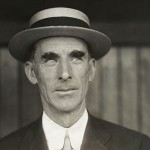 The other was the last
The other was the last 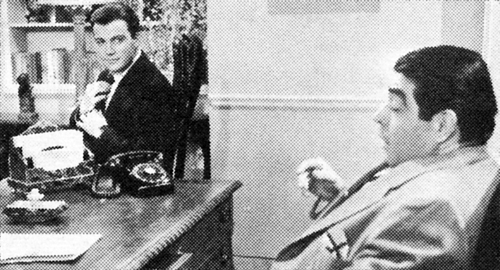
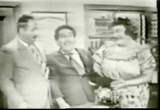
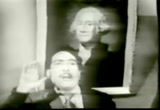 Life with Luigi was a tribute to the depth of love that most immigrants to America and a gentle nudge to native born American to understand and preserve what they had. Early episodes of Life with Luigi overplayed this. with one promo boasting that as a new immigrant off the boat from Italy, Luigi knew more about this country’ s government and freedoms than most Americans.
Life with Luigi was a tribute to the depth of love that most immigrants to America and a gentle nudge to native born American to understand and preserve what they had. Early episodes of Life with Luigi overplayed this. with one promo boasting that as a new immigrant off the boat from Italy, Luigi knew more about this country’ s government and freedoms than most Americans.